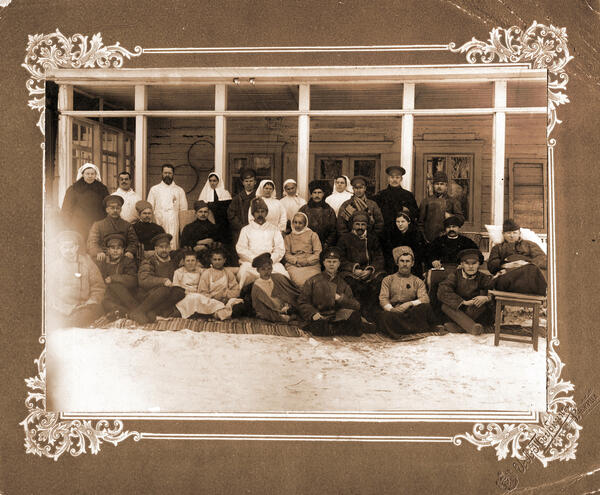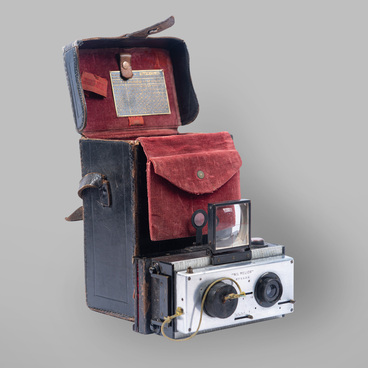Elena Mikhailovna Boratynskaya, daughter of M. A. Boratynsky, dedicated her life to medical service. Her decision was prompted by the Russo-Japanese War, which began on 8 February 1914. Like many girls of her circle, Elena Mikhailovna finished nursing courses run by the Red Cross and went to war — to the 7th Hospital of Petrograd Sisters of Charity of M. P. von Kaufmann in Irkutsk. But E. M. Boratynskaya’s medical service was not interrupted when the war was over.
In 1912, she graduated from the Rozhdestvensky Medical Courses in Petrograd. On 6 August, 1914 she was sent to work at a military hospital, the 70th Field Reserve Hospital in Dvinsk. Some time later, E. M. Boratynskaya went to work in a private infirmary managed by her relative Mikhail Viktorovich Artsimovich. This infirmary was located near Dvinsk, on M. V. Artsimovich’s estate in Runtort, Vitebsk province (now Latvia). It was there, in M. V. Artsimovich’s private infirmary, that the photograph preserved in the Kirsanov Local History Museum was taken in January 1916.
The photographer Itzik Avievich Toubkin, who took this photo, was one of the most famous and experienced photographers in Rézice (now Rēzekne, Latvia). By that time Toubkin had been engaged in photography for more than 20 years, working not only in Rēzice, where he had two ateliers, but all over the district.
In 1912, she graduated from the Rozhdestvensky Medical Courses in Petrograd. On 6 August, 1914 she was sent to work at a military hospital, the 70th Field Reserve Hospital in Dvinsk. Some time later, E. M. Boratynskaya went to work in a private infirmary managed by her relative Mikhail Viktorovich Artsimovich. This infirmary was located near Dvinsk, on M. V. Artsimovich’s estate in Runtort, Vitebsk province (now Latvia). It was there, in M. V. Artsimovich’s private infirmary, that the photograph preserved in the Kirsanov Local History Museum was taken in January 1916.
The photographer Itzik Avievich Toubkin, who took this photo, was one of the most famous and experienced photographers in Rézice (now Rēzekne, Latvia). By that time Toubkin had been engaged in photography for more than 20 years, working not only in Rēzice, where he had two ateliers, but all over the district.




